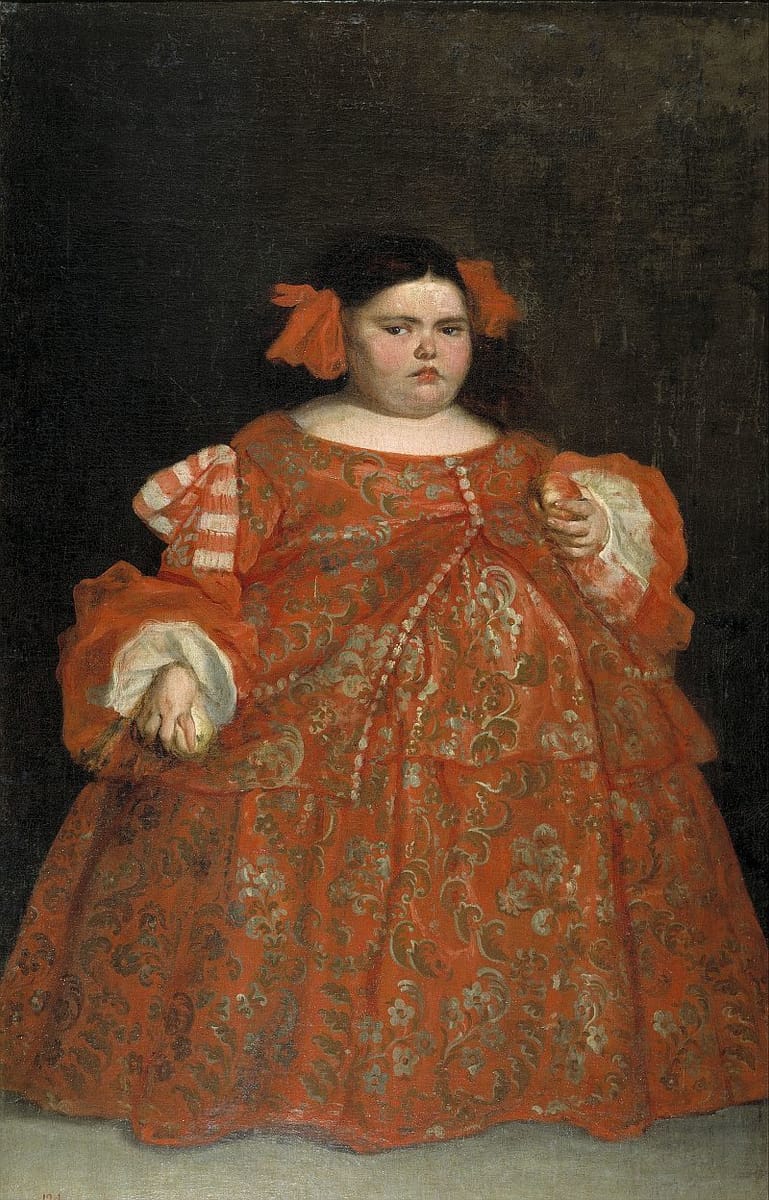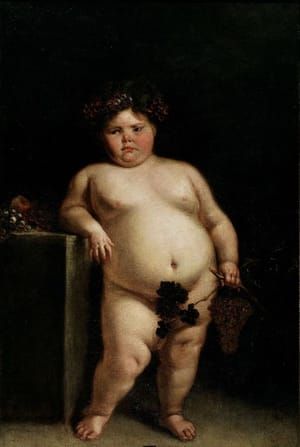

Eugenia Martínez Vallejo, Clothed, 1680
Juan Carreño De Miranda
In the courts of Spain´s nobility, the 16th-century fascination with oddities of the natural world persisted into the seventeenth and was manifested in, among other things, an interest in people with some mental or physical anomaly....
Two works by Juan Carreño de Miranda - who was appointed court painter in 1671 - are striking examples of this fascination and attest to the different roles painting has played in earlier historical periods. Both paintings represent a 6-year-old girl, known as La Monstrua, whose extraordinary size (she weighed nearly 70 kilograms) caused a sensation in Madrid when she was taken there in 1680. It has been speculated that her obesity was the result of a hormonal disorder such as Cushing´s syndrome or hypercorticism. Of the two paintings, this one shows her dressed, while in the other she is nude. The curiosity she provoked led to the publication of three short texts describing her, including one by Juan Cabezas that refers to the origin of the paintings: "The king our lord has ordered she be attired decorously, in the style of the palace, in a sumptuous dress with red and white brocade and silver buttons, and he has commanded the second Apelles of our Spain, his painter, the distinguished Juan Carreño, to produce two different portraits of her: one nude, the other clothed."
These are works that must have enjoyed considerable success, for references to various copies also exist. In them, deformity is presented in ways that today would strike us as cruel, but that was wholly consonant with contemporary mores regarding difference. Not only are we contemplating an image of a young girl exhibited like a natural history specimen, clothed and nude (all the more remarkable when we consider the highly restrictive cultural attitudes towards any sort of female nude during this period), but we are also viewing a play of appearances, much in keeping with contemporary taste. With her nudity exposing her corpulence, and with grapes in her hand and adorning her head, she transforms into Bacchus; clothed, her luxurious, scarlet dress creates an intended contrast with her physical form, making her nude portrait all the more explicit.Thus, nature, myth and artifice converge in these portraits, which have been cited as precedents for Francisco de Goya´s famous clothed and naked Majas 1800-07 (P741,P742), as Goya may have seen Carreño´s works in the Royal Collections for which they were executed.Times change, however, as do the conventions for nude portraits and ideas of decorum. Thus, these paintings, which for many years stood fundamentally as representations of a natural wonder, were viewed in the early 19th century quite differently. In 1827, the collections of La Zarzuela (previously a royal hunting lodge in the grounds of the El Pardo palace) were examined to find paintings suitable for the Museo del Prado, and the decision was made to send only the clothed version; arguments against including the second painting invoked her nudity, for by then it was deemed offensive by some. For this reason, Ferdinand VII parted with the second painting, presenting it as a gift to the painter Juan Gálvez. A generous donation to the Prado in 1939 made it possible to reunite the two works again (Portús, J.: Portrait of Spain. Masterpieces from the Prado, Queensland Art Gallery-Art Exhibitions Australia, 2012, p. 98).
(https://www.museodelprado.es/en/the-collection/art-work/eugenia-martinez-vallejo-clothed/f8092cbd-8dd4-4c63-af63-1402940150f0)
Uploaded on Oct 1, 2017 by Suzan Hamer
Juan Carreño De Miranda
artistArthur
Wait what?

